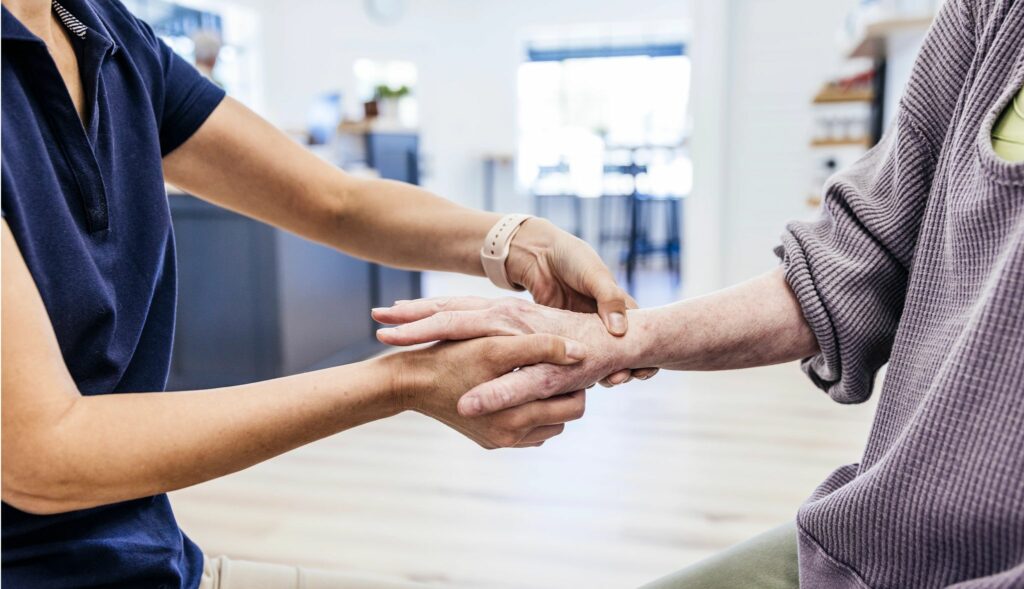
In March 2015, Doug Nichols and his family traveled to Sanibel Island, Florida, for a spring getaway. During lunch on the second day, Nichols’ speech became slurred. The left side of his face drooped. While taking his dishes to the kitchen, he dropped a glass and his phone.“
My wife sat me down and said, ‘You’re having a stroke, and you need to go to the hospital.’” He couldn’t move the left side of his body. Nichols stayed in the hospital for two weeks, until he was medically stable enough to fly home to the Chicago metro area, where he went straight to inpatient rehab for about a month followed by four months of outpatient rehab.
“I really didn’t have any expectations,” says Nichols, who was 59 at the time. “I was hoping to regain some functionality at a basic level, but I didn’t really know what the journey ahead would look like.”
It turned out to be long: With those five months of rehab, Nichols partially regained the ability to move his left hand and arm, and his speech improved. An additional boost came years after his stroke, when he got a new procedure that further boosted movement of his hand and arm.
How much progress a person can make and the timeline for their recovery depend on the type and location of the stroke and the patient’s age and overall health, says Richard Harvey, M.D., clinical chair of Shirley Ryan AbilityLab’s Brain Innovation Center in Chicago, where Nichols did his outpatient rehab. For many survivors, it can be a tough road. Stroke is a leading cause of serious long-term disability. More than half of survivors 65 and over are left with reduced mobility, according to the Centers for Disease Control and Prevention. Other impacts, which can be long- or short-lasting, may include problems with thinking, communicating, vision, emotions and behavior.
Still, many people regain at least some of the abilities they lost. “I tell stroke patients that the path to recovery is not a straight line,” says Nneka Ifejika, M.D., a professor of physical medicine and rehabilitation and neurology at UT Southwestern Medical Center in Dallas and a volunteer expert for the American Stroke Association. “It has twists, turns, times of acceleration and times of pause. The most important thing is not to lose hope.”
For more information on stroke recovery, including timeline and stages, from AARP, CLICK HERE.

